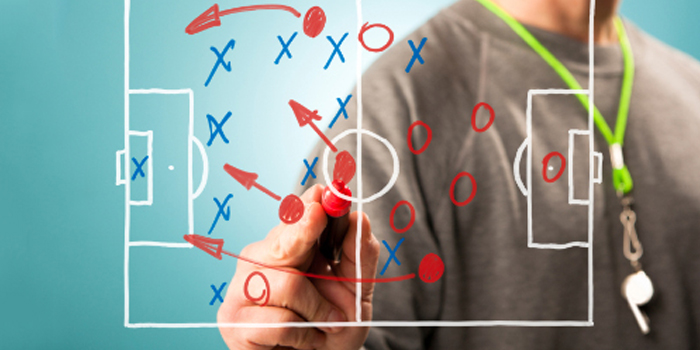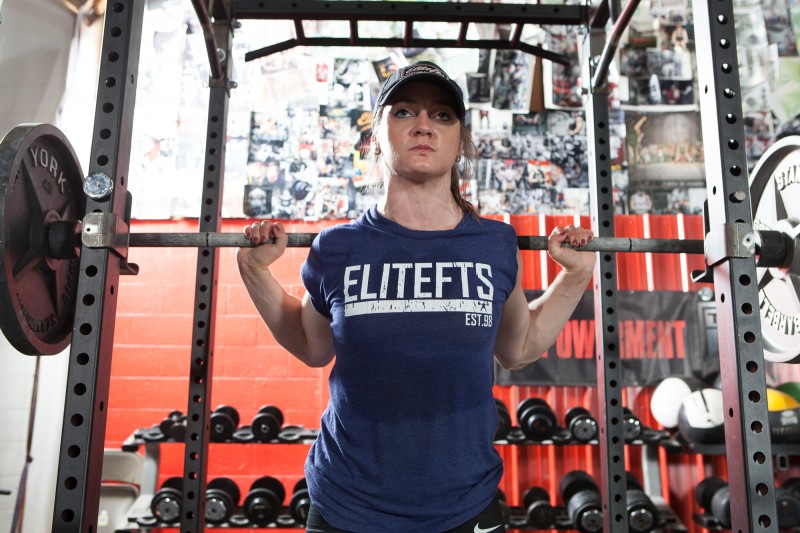
I've been a strength and conditioning coach for nearly 20 years. During this time, I've changed the views I've had on how to most effectively train and manage athletes and a team. Early in my career, I was told that I needed to develop a personal philosophy. Then I heard Buddy Morris say, "I'm not a philosopher, so don’t worry about that." This led me to a crossroads. Do I worry about my one-page mission statement and philosophy in life, or do I just get busy training athletes?
As with most things, I found a middle ground. I developed a short, overarching philosophy that hasn't changed through the years—and even decades—of training athletes. My philosophy is: “Improve the athlete (person) through and of the human body.”
RECENT: The Coach's Order of Operation
This encompasses everything that I do and will probably help me decide why I do what I do today and well into the future. Whenever I struggle with decisions regarding training my athletes, I run that sentence through my head. It's akin to my personal why. In my younger years, my why was “to get them strong.” As I've matured, I've learned that while our end goal must be to increase strength, the human is greater than the athlete. This led me down the path of asking the question: How strong is strong enough?
Define Strength
To decide how strong is strong enough, we first have to define strength. In powerlifting, the person who can squat, bench, and deadlift the most is the strongest. In Strongman, the person who can do whatever the competition deems important for that day the best is the strongest, and in Olympic lifting, the person who can take the most weight from the floor to over the head is the strongest.
With many different ways to define strength, we each must come up with our own method for defining strength. I tend to use squats as the movement that defines strength. Without going too deep into what every study ever done on strength defines strength as I believe most will agree that a squat that is two to two-and-a-half times a person's body weight is a good number to be considered strong. From what I've read and seen, this is a reasonable number to shoot for with most of your athletes. I believe the deadlift is similar (maybe a little higher) to this number as well. The problem with these numbers is how do you define the squat? With different body types, do you require below parallel?

Almost every strength coach uses the squat for his or her athletes, and I believe this is a very good thing, but debating squat depth may be the most inane thing any strength coach can do. I don’t know why an athlete uses the squat depth that he does. I care why, but I don’t care to hear a defense or a judgment. With my current basketball team, we have many athletes who can squat well below parallel. This doesn't mean anything to me other than knowing that they move well in the squat.
RELATED: Starting Over in the Basement
How often have you heard a strength coach say something akin to “They can’t squat because of tight hips”? Statements like these drive me nuts. We aren't physical therapists, we aren't doctors, and we aren't athletic trainers. We are strength and conditioning coaches. Train the movement and the issues will fix themselves. How many times have we heard the adage "Train movements, not muscles?" Why is this so different when we try to be smart about joints? I'm going to start a new saying: “Train movements, not joints.” We don't know all that is going on within the body at any given movement. Let’s improve their squats.
As I stated a few paragraphs above, the goal for the squat should be around two to two-and-a-half times a person's body weight. I'll also add the press and pull-ups to this. For a female, five pull-ups is where strength starts. If you can't perform five good pull-ups, I recommend that you stop calling yourself an athlete. Before anyone goes to Pub Med, no, I don't have any research on this number. But what I do have is years of learning in the weight room. I've found that there is a correlation from pull-up ability to jumping and speed. While this correlation isn't 100 percent, it is close. If an athlete increases his or her relative strength, he or she will do better on most body weight tests (i.e., jumps, running). For a male athlete, the number of pull-ups is 10. I also test weighted pull-ups at times as an overall strength test.
Testing the Press
Go to any gym in America, and someone is benching or trying to bench two, three, or four plates for the first time. As a competitive powerlifter, I love the bench. As a coach, I love and hate the bench.
I don't have most of my female athletes perform the classic barbell bench. I use floor presses as well as overhead work for our pressing instead. With male athletes, we do perform the bench press and we test this lift. I do this more for context than for any other reason. Most guys know what a good bench press is and have done a bench press. Knowing that they're more familiar with this lift and that it can be an ego boost, we use this in our testing. For the male athletes, I don't worry as much about body weight as I do about weight moved. For football players, 315 pounds is the start to a good bench. Once we hit 405 pounds, we are now strong. For basketball, I like to see everyone be able to hit 225 pounds, with 315 pounds from our outliers.
READ MORE: Big Back, Big Bench
Overhead pressing is the other pressing test that we may use. The concern with this test is keeping technique sharp. Almost all athletes will cheat this lift (even if it’s just a little), so watching and coaching this lift is of the utmost importance. To be considered strong with this lift, the athletes need to be able to overhead press 90 percent of their body weight. I realize that there are many variables to be taken into account with this, and I've seen people overhead press much more than 90 percent of their body weight. But taking close to your body weight and pressing it over your head is a nice sign of strength.
Judging Strength
Many of you could probably poke holes in the numbers and exercises that I just used, and I fully hope and anticipate that you do that. We all need a heretic; feel free to be mine. In the preceding paragraphs, I've given you just a glimpse into some of the things that I've seen over the years. I'm not sure if any of this will work for you, but it has helped my athletes immensely, both in sport as well as in life.










